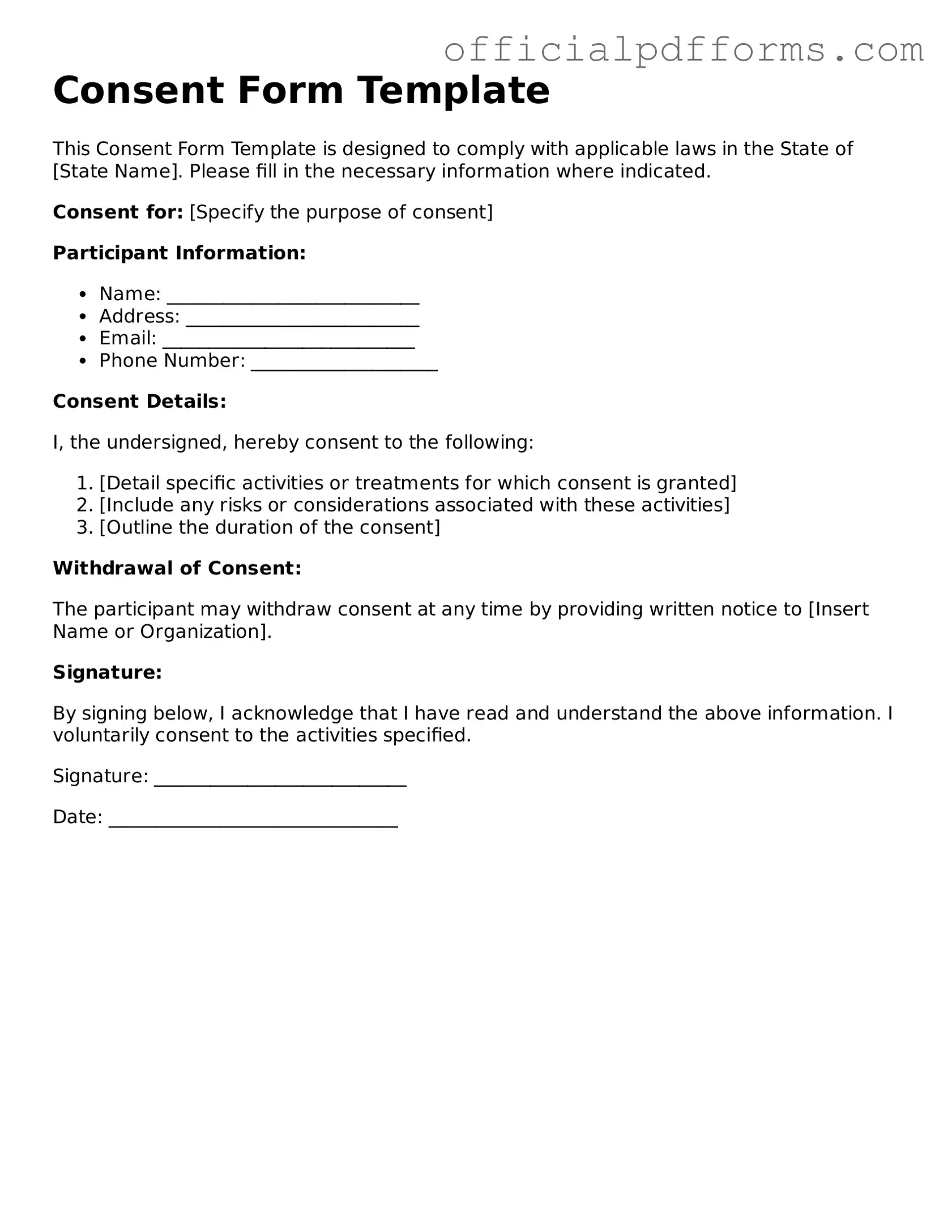Valid Consent Document
A consent form is a document that individuals sign to indicate their agreement to participate in a specific activity, often related to medical procedures, research studies, or the use of personal information. This form ensures that participants are fully informed about what they are agreeing to, allowing them to make educated decisions. To proceed with your participation, please fill out the consent form by clicking the button below.
Access Form Online
